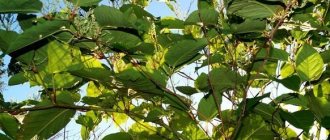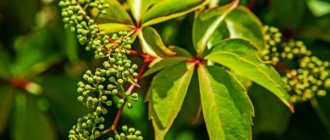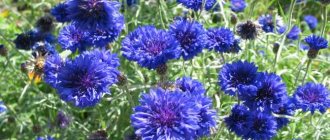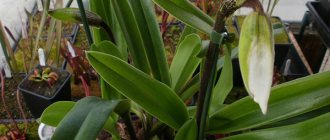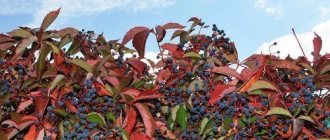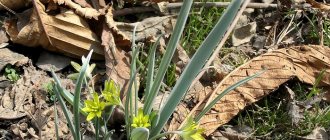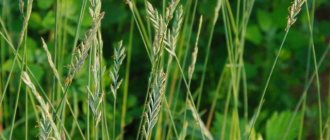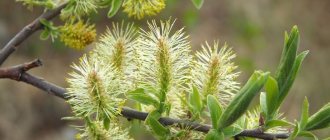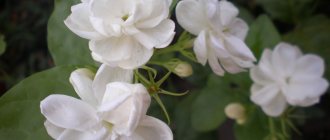Garden jasmine, or mock orange, can be called truly royal among unpretentious shrubs. This is an unpretentious flower that pleases gardeners with the durability and splendor of flowering. During the flowering period of garden jasmine, a gentle and romantic atmosphere is created in the garden, making the shrub a favorite of many gardeners.
Description
Mock orange is a plant from the Hydrangeaceae family. In Russia, the hollow shoots of this plant have long been used to make a chibouk - part of a pipe for smoking.
This shrub is popularly called jasmine because of the similarity of the aroma and color of its flowers with some varieties of indoor jasmine.
Popular rumor says that garden jasmine is the key to happiness and good luck.
There is a version that garden jasmine came to our country in the 17th century from Germany during the reign of the Romanov dynasty.
There are several versions of the origin of garden jasmine. According to one legend, an angel, wanting to make people's lives more beautiful, descended from heaven and turned into a jasmine bush. The ancient Greeks believed that the fragrant bush with charming white flowers was the work of the goddess of wisdom, Athena. Be that as it may, even now jasmine symbolizes love and evokes romantic associations.
The flowering time for mock orange is in the summer and lasts about three weeks. All varieties of this shrub shed their leaves in winter. The height of the shrubs varies: from seventy centimeters to 5 meters and above.
Beneficial features
The beneficial properties of jasmine allow the plant to be used in folk medicine. The plant is rich in salicylic, benzoic, formic acid, as well as essential oil. Jasmine oil is effective for wounds and is used to disinfect them.
The essential oil of the king of flowers is considered one of the most valuable and expensive oils. This is due to the costs of its production, because jasmine is very reluctant to give up oil: from 1000 kg of fresh flowers only 1 kg of oil is obtained.
Remedies prepared on the basis of jasmine are good at relieving pain symptoms, so jasmine is often included in mixtures for muscle pain and joint pain.
Article on the topic: Dogwood (male) - beneficial properties, description
Jasmine is considered a female plant, it helps against many diseases.
Taking jasmine also promotes lactation. Decoctions or teas with jasmine and warm baths are considered an effective remedy for women. Jasmine can reduce the pain that accompanies menstruation. The properties of the plant help relieve pain during contractions.
A cup of hot green tea with jasmine petals will relieve headaches. Jasmine is also effective for migraines. Jasmine is known as an aphrodisiac; it increases potency and increases sexual desire. Jasmine oil has long been used for romantic purposes; it helps to relax and tune in to a pleasant pastime. The smell of jasmine drives away anxiety, fear, and depression. Green tea with jasmine perfectly fights irritability, improves mood, and tones the body.
In cosmetology, jasmine is used as an anti-aging agent. Jasmine essential oil can be used for relaxing baths, which will help get rid of fatigue after a hard day. A few drops of essential oil should be added to a tablespoon of cream or honey so that the concentrated oil does not cause a burn. The bath should take no more than 20 minutes. Jasmine is considered an effective remedy for mature skin, but can also be used to care for sensitive or dry skin, in which case it is added to 3 drops per 100 ml of base.
When used externally, the leaves of the shrub can be used as a remedy for calluses. To get rid of calluses, apply crushed jasmine leaves for several days.
Types and varieties
Currently, more than sixty species of garden jasmine are known. Plants can be distinguished by their appearance. In addition, in the aroma of some of them you can catch notes of strawberry and citrus.
Common mock orange (Philadelphus coronarius)
This is a classic representative of a branched shrub, with graceful 3-meter shoots. On each shoot during the flowering period, clusters of cream-colored flowers are formed. The leaves have a simple oval shape.
Crown mock orange (Philadelphus coronarius)
A spreading, frost-resistant variety with reddish or yellowish bark. The oval leaves are smooth on one side and pubescent on the other, located opposite each other. Delicate cream flowers are in loose clusters.
Downy mock orange (Philadelphus pubescens)
It is distinguished from other brethren by the airiness of its lower leaves, which is why it got its name. The shoots are covered with layered bark only in the lower part. The flowering period of this shrub occurs in mid-summer, but the inflorescences of lush cups of boiling white flowers are practically odorless.
Small-leaved mock orange (Philadelphus microphyllus)
This type of mock orange got its name not only because of the size of its leaves, which are indeed quite small, no more than two centimeters. The shrub itself is also small in size and reaches only one and a half meters in height. The crown of the bush is also quite compact. The flowers look quite simple and are arranged one at a time or collected in small inflorescences. The main feature of this garden jasmine is its unique strawberry aroma.
Odorless mock orange (Philadelphus inodorus)
The main difference of this plant is the lack of aroma, which is compensated by lush and long-lasting flowering, which lasts from the end of June and lasts until August. 4- and 5-petalled simple flowers are collected in brushes of up to five pieces. In addition, it is one of the tallest shrubs of its kind: up to four meters in height. The crown diameter reaches three meters.
Lemoine mock orange (Philadelphus lemoinei)
This hybrid consists of many subspecies, united by a sweet, rich smell. Fragrant flowers are diluted by bright and small leaves, and the bush itself can grow strongly and form dense thickets reaching up to 3 meters in height.
Schrenk's mock orange (Philadelphus schrenkii)
The bark on young shoots is brownish in color and covered with hairs. In the second year of the plant’s life, cracks appear on the bark, it crumbles, and its color changes to grayish-brown.
The leaves of this three-meter giant are elliptical in shape and have a jagged edge. The diameter of the flowers is small, up to four centimeters. At the same time, the flowers are collected in clusters of 9 pieces and have a delicate aroma.
Gordon's mock orange (Philadelphus gordonianus)
A real giant among the representatives of its genus, which can stretch 5-6 meters in height. Glossy large leaves and large white marbled flowers with a subtle aroma, which form in late July, contributed to its inclusion in the category of ornamental variety.
How to care
In order to fully enjoy the beauty of mock orange, you need to follow the basic rules of planting and caring for the plant.
Soil selection
The best soil in this case is a mixture containing 3 parts leaf soil, 1 part sand and 2 parts humus. Particular attention should be paid to ensuring that the soil is breathable, loose and fertile. It is necessary to maintain a neutral acidity level.
Location and lighting
For abundant flowering, mock orange requires sun, so it is better to choose a sunny place for planting. Even prolonged exposure to direct sunlight will not harm it. The plant will not like swampy and shady areas.
Temperature, humidity and watering
Watering directly depends on the quality of the soil. The plant especially needs moisture in the spring, before the flowering period, but most often at this time the soil receives moisture naturally. In case of a dry spring, moderate watering will be necessary. Mock orange should not be allowed to grow in constantly wet soil. It does not grow well in places where groundwater flows or in places where there is a constant supply of moisture. An adult plant tolerates Russian frosts and temperatures of +30...+40 degrees in the summer.
Fertilizers and fertilizers
To a greater extent, mock orange needs feeding during the period of its active growth, that is, in early spring, when it best absorbs nutrients. In the first year and only once, preferably towards the end of spring, 1 bucket of infusion consisting of water and slurry in a ratio of 10:1 must be added under the jasmine bush. In subsequent years, garden jasmine is fed exclusively with mineral fertilizers containing urea, potassium sulfate and superphosphate. Ash from an old fire is a good fertilizer for jasmine.
Transfer
Due to the fact that the root system of garden jasmine is quite compact, the replanting process is safe for the plant. The most optimal period for transplantation is considered to be early autumn or spring. You need to start by preparing a hole for the bush, the size of which depends solely on the volume of the root. The most suitable hole dimensions are 60x60x60. In order to preserve the earthen lump on the roots, the plant is subjected to abundant watering on the eve of transplantation. The side shoots must be removed, the central 3 stems must be cut to a height of thirty to forty centimeters.
In case of spring transplantation, the plant needs feeding. When the plant takes root, fresh ones appear on the “stumps” remaining after removing the side shoots. After wintering, the strongest of the fresh shoots are left, and the rest are removed. With this technology, mock orange will bloom in the 3-4th year. A large shrub can be divided in case of transplantation.
Trimming
To create a lush and fragrant jasmine bush, in addition to regular care and systematic watering, the plant should be pruned. Moreover, this should be done correctly and systematically.
Rules for pruning mock orange:
- Pruning is best done while the plant is in a vegetative state, that is, in the spring.
- Those branches that are significantly longer than the rest need to be cut off at the root. Branches of medium length - half.
- Using special scissors, it is necessary to remove all branches on which flowering does not occur. In this way, the so-called “anti-aging pruning” is carried out.
- The central trunk of an adult bush needs to be shortened by 40-60 centimeters.
Winter care
An adult garden jasmine does not need special care in winter; it does not need to be covered. Young specimens should be covered for the winter with a layer of peat or pine needles. It is useful to cover the place where the root system is located with leaf humus. After heavy snowfalls and at the end of winter, it is necessary to free the crown of the bush from the snow cap.
Transplanting jasmine to another place in the fall
An adult bush requires transplanting to another place if it is in the shade of overgrown trees and grows and blooms poorly. Sometimes jasmine is replanted due to the redevelopment of plants on the site.
This procedure is performed in spring or autumn. If you replant in the autumn, then the first half of October is suitable.
After flowering, the bush will by this time become stronger again and saturated with useful substances. It is not recommended to transplant an adult plant to another place if it is 7-8 years old. It will take a long time to take root in a new place and may even die.
The process itself goes as follows:
- Dig a spacious hole. Place drainage at the bottom.
- Add fertilizer to the soil. It can be humus, superphosphate or wood ash.
- Pour a bucket of water into the hole and let it soak for half an hour.
- Cut off the old shoots of the bush, thin it out - this way it will take root better, because it will require fewer nutrients for restoration.
- Tie the remaining branches with rope for ease of planting.
- Pour 5-6 buckets of water under the bush so that the soil softens and it can be easily dug up.
- Carefully dig up the jasmine roots without damaging them.
- Carefully remove the bush from the ground and move it to a new location.
- Place the roots in the hole, cover with soil and water.
Finally, cover the soil with bark or pine needles. Then all that remains is to watch the growth of the bush. If all recommendations are followed, the bush grows quickly.
Reproduction methods
In total, there are 4 options for how to propagate mock orange.
Propagation by cuttings
The most common method, due to its reliability. This is explained by the good rooting of cuttings. Mock orange propagates equally well from both green and lignified cuttings.
If you choose propagation by green cuttings, then in this case the cutting of the shoots is carried out in mid-June.
For spring reproduction of mock orange, material is collected in the fall. To do this, lignified annual shoots are cut, wrapped in film and stored in a cool place. This could be the cellar or the bottom of the refrigerator.
In mid-March, the shoots are taken out from a cool place and cut into cuttings so that 3-4 buds remain on each cutting. The length of the cuttings in this case will be about 15-20 cm. The upper cut is made straight and 1 cm above the bud, and the lower cut at an angle of 45 degrees and under the bud. Then the cuttings are placed for a day in a solution that stimulates the formation of roots.
The cuttings prepared in this way are planted at an angle in a loose substrate, which should consist of a mixture of peat and sand in a 1:1 ratio. To increase air humidity, it is recommended to spray the plantings with water and then cover them with the top of a plastic bottle. Remove the cap from the bottle for ventilation.
After planting, the cuttings are regularly sprayed and watered. Within 5 weeks, the cuttings will take root completely and in mid-to-late May they will be ready for planting in open ground.
Reproduction by layering
During the period of vegetative growth, young shoots, before leaves appear on them, need to be pressed to the ground and a wire harness should be applied at a distance of one centimeter above the lower bud. Over time, the stem will thicken and roots will appear on it. At this point, the stem is carefully sprinkled with a layer of fertile soil. After the shoot takes root, it must be hilled up and watered. It is best to plant a young bush in the fall in a temporary bed, and when it gets stronger, after a year or two, plant it in a permanent place.
Propagation using seeds
This process is longer than those previously described. When grown from seeds, jasmine will bloom no earlier than 5 years after planting.
The optimal time for sowing seeds is November or March. When planting in the spring, the seeds must be placed for 3 hours in a solution that will stimulate their growth. After this, the seeds are placed in a bag, which is stored in sawdust for two to three days. Next, the seeds are sown in a container with moistened soil, including sand, peat chips and humus in equal proportions. Sprinkle the seeds on top with a thin layer of peat and re-moisten them.
Reproduction by dividing the root system
This method is not suitable for propagating large mock orange shrubs, but is ideal for young plants. To do this, carefully dig up the bush and remove excess clods of earth from the roots. The best time to use this propagation method is October.
Preparing jasmine for winter
Some varieties of jasmine tolerate frost well and do not require covering for the winter. If, nevertheless, the young shoots freeze, then after spring treatment they will recover again. Mature bushes tolerate low temperatures well.
Young plants do not tolerate frost so well and require shelter. This applies to annual bushes or seedlings planted in the fall. They can be insulated with any covering material by wrapping them and securing them with ropes.
Dig up the soil around the stem and cover it with mulch. Pine needles, manure, garden compost and spruce paws are suitable. A layer of insulation will help save the root system from freezing.
Diseases and pests
To a greater extent, mock orange leaves may suffer from powdery mildew, brown and gray spotting. To prevent these common diseases, you should carefully inspect the plant during the growing season and, when the first signs of the disease are detected, cut off and destroy the infected shoots. Fallen leaves are a source of infection, and therefore must be removed from under the bushes.
The most dangerous for jasmine is the appearance of aphids, scale insects, mealybugs, spider mites and whiteflies. When these pests appear, it is recommended to immediately treat the plant with special preparations.

